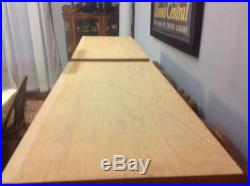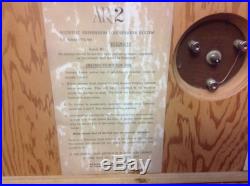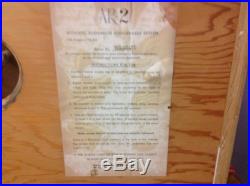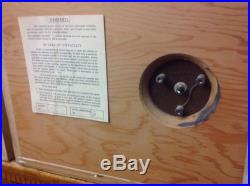







(AR) was founded in 1952 and incorporated on August 10, 1954 by audio pioneer, writer, inventor, researcher and audio-electronics teacher Edgar M. Villchur (1917 – 2011) and his student, Henry Kloss (1929 – 2002). NY Times / October 18, 2011. Edgar Villchur took his new design to two speaker manufacturers but they were not interested. One of his former students, Henry Kloss (1929 – 2002), was interested. “After these two rebuffs, and in particular, because of the nature of the rebuffs, I changed my mind”, said Villchur. In the spring of 1954, Villchur drove Kloss up to his lab in Woodstock, NY describing the theory of his new enclosure design along the way. After they arrived, Villchur played some recordings, including an E. Power Biggs LP with copious low-frequency content. After hearing it, Kloss exclaimed, That’s it! And again offered the use of his Cambridge (Massachusetts) loft to manufacture acoustic suspension loudspeakers. And thus, AR was born, observed Villchur. In 1954, Acoustic Research introduced the small AR-1 bookshelf loudspeaker that used the acoustic suspension principle developed by company co-founders Edgar Villchur and Henry Kloss. These were soon followed by the AR-2 and the AR-3 with an improved dome tweeter in 1958. A bit later the AR-2a joined the lineup. The AR-2a added the AR-3 tweeter to the existing AR-2 system. At that time the company was also producing the AR Turntable, which Villchur designed.. The acoustic suspension design allows a lot of bass from a small package. The cabinet must be small, so that there is enough air pressure inside of the cabinet to pull the woofer back in. The cabinet is sealed air tight with putty. When the woofer moves out, the air pressure on the inside of the cabinet lowers drastically, causing the cone to be sucked back inside the cabinet. The woofer itself, when removed from the cabinet, is very compliant, it has no restoring force of its own. When installed in the sealed cabinet, the air is the restoring force, described above. Ported speakers must use woofers with very stiff suspensions, the stiff suspensions supply the restoring force in a ported speaker, therefore, the response is influenced by the spring. With the acoustic suspension design, response is linear, and undistorted. Acoustic suspension is a far superior design to ported designs, the only drawback, is they are inefficient. Prix, The only reason your high frequency extension is lacking, and detail is laking, is due to power. Since we spoke last, I ran some tests of my own. I connected my AR-2’s to an old receiver of mine, that is about 16. I had the same problems that you described. I then proceeded to connect them to a bit larger amp, a 50 watt per channel hafler. I have been using my AR-2’s with a 125 watt per channel Adcom, for a few years now, and that setup sounds great. Power is the key to these speakers. While the AR-2 is a bit more efficient than the AR-3, it still needs a fair amount of power. AR said at least 15 watts for the AR-2, however, I would recommend at least 25 watts. If you have a more powerful amp, connect them to that, and see what you think. IMHO, these are the best two way speakers ever made. !!! The item “Amazing Vintage Acoustic Research AR 2 Speakers” is in sale since Thursday, October 29, 2015. This item is in the category “Consumer Electronics\Vintage Electronics\Vintage Audio & Video\Vintage Speakers”. The seller is “vonmark01″ and is located in 60085. This item can be shipped to United States, to Canada, to United Kingdom, DK, RO, SK, BG, CZ, FI, HU, LV, LT, MT, EE, to Australia, GR, PT, CY, SI, to Japan, to China, SE, KR, ID, to Taiwan, ZA, TH, to Belgium, to France, to Hong Kong, to Ireland, to Netherlands, PL, to Spain, to Italy, to Germany, to Austria, RU, IL, to Mexico, to New Zealand, SG, to Switzerland, NO, SA, UA, AE, QA, KW, BH, HR, MY, TR, BR, CL, CO, CR, DO, PA, TT, GT, SV, HN, JM.
- Brand: Acustic Research (A R)
- Model: A R 2
- Country/Region of Manufacture: United States
